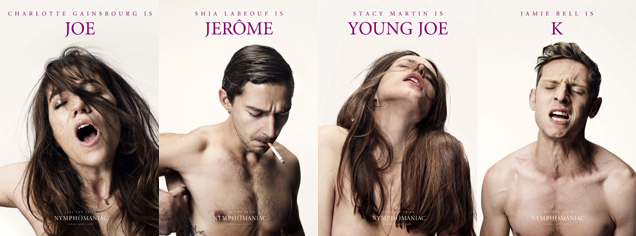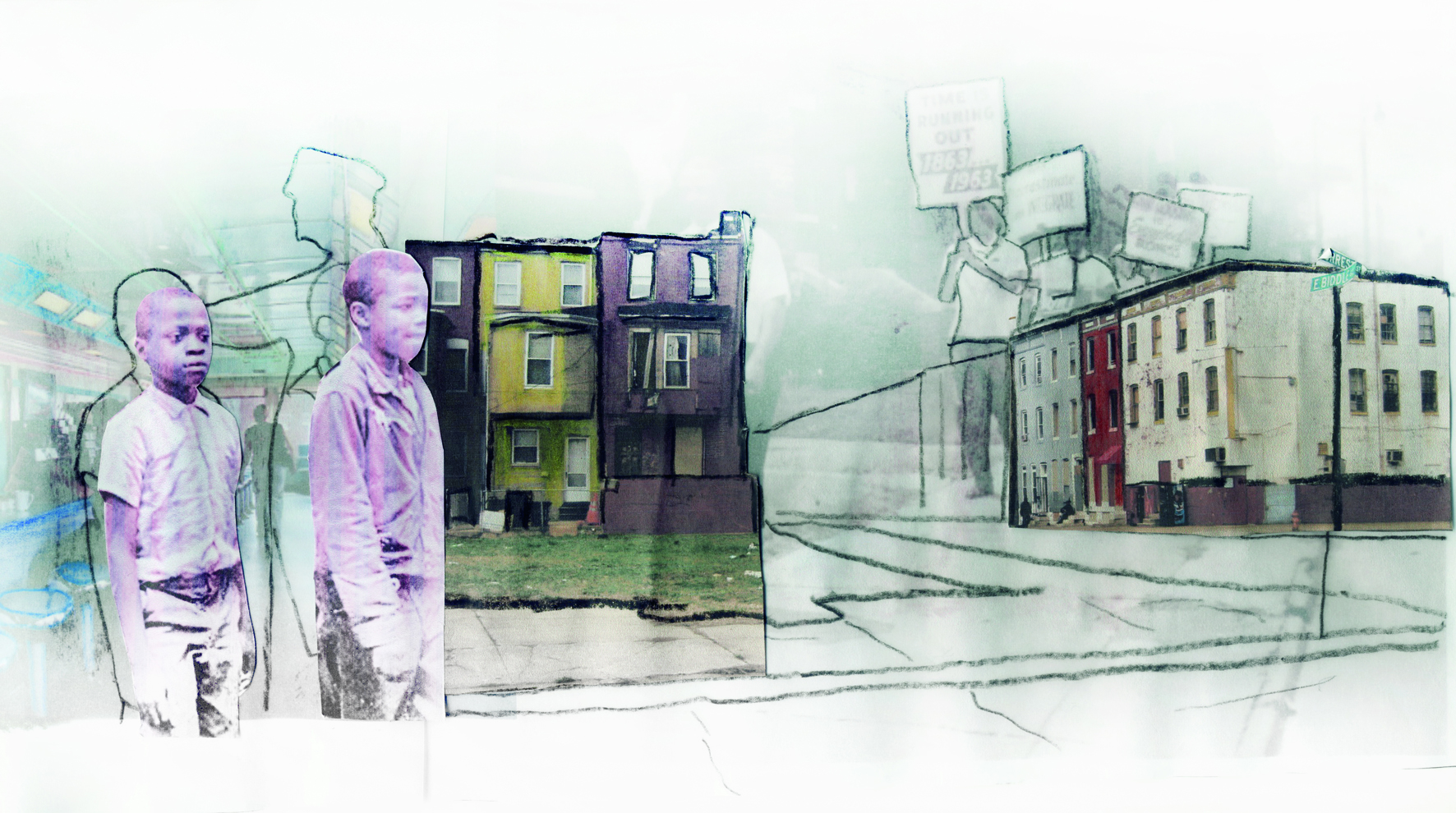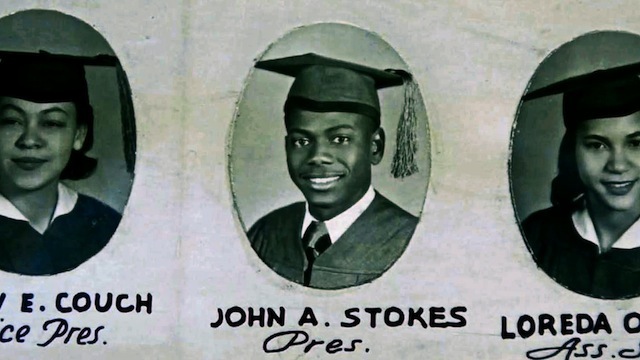By Juliet Jacques
By the mid-Seventies, the
London Film-Makers’ Co-operative was the key institution within British avant-garde film. After a decade of intense creativity, the Co-op’s leading artists aimed to define and cement the historical standing of the LFMC, hoping to situate it as a crucial development within international avant-garde film culture.
The Co-Op filmmakers aimed to achieve this by producing a body of writing that would document the LFMC’s past, and establish a vibrant theoretical discourse that would support and influence continued filmmaking.
Stephen Dwoskin’s Film Is (1975) was a comprehensive ‘underground’ history, combining personal memories with surveys of national avant-gardes, focusing on the Co-op in its treatment of Britain – the first of ‘the many film-makers’ co-operatives that began to spring up in Europe.’
Dwoskin was not the only LFMC protagonist frustrated at the critical neglect of the recent British avant-garde. Crucial in constituting debate around the Co-op’s work was
Peter Gidal’s Structural Film Anthology, published to accompany the 1976 Structural Film Retrospective at the National Film Theatre Beyond emphasising the institutional importance of the Co-op, Gidal retroactively drew similarities in the Co-op members’ films into a coherent movement with a sound theoretical base, positing Structuralism as the crucial presence within contemporary avant-garde praxis.
Gidal’s Anthology, including his comprehensive
‘Theory and Definition of Structural/Materialist Film’ originally published in 1974, ignited fierce debate about the constitution of film history.
Malcolm Le Grice’s book
Abstract Film and Beyond (1977) stated that ‘because my main concern with the modern movement has been to trace the aesthetic and formal developments, I have largely ignored political argument’ – Le Grice compensated by pointing readers towards his (and Gidal’s) writings on ‘the political implications of the film’s language, conventions and structure’. Abstract Film and Beyond was taken as an indication that the Structuralists prized formal exploration above socio-political engagement, and of their conceived narrative of film history – anticipating ideologically motivated criticism, Le Grice pessimistically conceded that ‘a neutral and inclusive history is broadly impossible.’
Two challenges were launched to the Structuralist hegemony – one from within that would extend the movement’s scope, and one from without, which saw Structuralism as irrelevant amidst the political conflicts that followed the 1973 power crisis. The challenge from within produced heated theoretical argument, which was conducted both through dialogue in journals such as Screen, LFMC magazine Undercut and feminist publication Camera Obscura, and through the creative application of their conclusions.
In 1975,
Peter Wollen wrote of the fierce divide between the Co-op tradition, prizing aesthetics above ideology, and that represented by Jean-Luc Godard and
Straub/Huillet, prioritising political commitment, in his influential essay ‘
The Two Avant-Gardes’, which traced the division back to the Twenties works by the Dadaists and Surrealists on one side, and the Soviet filmmakers on the other. The challenge from without eschewed theory and aimed to stand outside either avant-garde tradition, its directors (with little central organisation) preferring instead to draw on counter-cultural trends and the poetic ‘underground’ style of the
New American Cinema, which also resisted incorporation into Wollen’s binary opposition.
Many anthologised Structuralist filmmakers furthered their stylistic development without being prolific theorists.
William Raban’s
Thames Barrier (1977), for example, was an ambitious multi-screen film documenting the construction of the barrier; its skilful manipulation of filmic time represented the apex of a technique that Raban had evolved throughout his practical career. However, theory – as Gidal defined it, ‘written retrospective history which can function as a basis for its own practice (theoretical practice) and/or the practice of film-making’ increasingly came to dominate proceedings within the LFMC, as its leading artists aimed to develop their theory and practice in relation to each other.
The main challenge from within came from female artists, who broke away from the Co-op in the late Seventies to set up their own East London organisation, Circles.
Lis Rhodes’ influential work
Light Reading (1978) drew as much from
Maya Deren and
Germaine Dulac’s poetic traditions as the more formalist LFMC trends, suggesting a split that was artistic as well as political, with stylistic approaches assuming ideological connotations. Rhodes used the catalogue for the 1979 ‘Film is Film’ exhibition, in which women filmmakers refused to participate, to express dissatisfaction with the male domination of the definition of history. Rhodes questioned the usefulness of portraying Structuralism as a cogent movement, suggesting that ‘seeing “difference” is more important than accepting “sameness”’ and emphasising the need for female filmmakers to research and write their own histories.
Laura Mulvey also stated the need to recast female directors within avant-garde history. Citing Dulac, Deren, Agnès Varda and Leni Riefenstahl as important protagonists in Modernist experimentation, Mulvey also demanded rigorous feminist critiques of mainstream film: her own,
Visual Pleasure and Narrative Cinema was published in Screen in 1975. Mulvey’s essay deconstructed the patriarchal story-telling methods of classical Hollywood narratives, which demanded that viewers identify with a (heterosexual) male subject. Although it drew much criticism from those who felt Mulvey failed to account for homosexual subject positions, or those of heterosexual women, her writing was hugely influential, particularly in introducing Freudian psychoanalysis into film theory.
It was not enough for women to reconsider history or critique contemporary film cultures: they had to create their own. Mulvey welcomed the fact that feminists were taking a ‘cautious’ interest in Modernism, and that the avant-garde displayed a ‘sense of the relevance of the feminist challenge.’ Mulvey’s
Riddles of the Sphinx (1977, with Peter Wollen) creatively manifested her narrative theories, and aimed to offer a radically alternative means of cinematic representation of women. Mulvey’s earlier work with Wollen,
Penthesilea (1974) also embodied their theoretical conclusions – appreciating that this would restrict understanding of her films by both non-academic feminists and the wider public, Mulvey stated that, ‘The problem is that counter-institutions which lack a theory tend spontaneously to reflect the ideology in reaction to which they were formed.’
Economically and politically, there was a constant sense of worsening crisis, leading some artists to feel that pure formalism was socially irresponsible. The oil crisis, the eruption of the Irish Troubles, football hooliganism, strikes, inflation, unemployment, the impotence of the Labour government and the election of Margaret Thatcher as Conservative leader in 1975, and Prime Minister in 1979, all served to undermine the gains made by the Left since Harold Wilson’s original election in 1964, such as the 1970 Equal Pay Act, the 1975 Sexual Discrimination Act, and the three Race Relations Acts passed between 1965 and 1975.
Despite the introduction of the 1974 Terrorism Act (after which the police broke into the Co-op’s premises and mounted a dawn raid on William Raban’s house), Structuralist and feminist theory often avoided current political issues, and for many upcoming filmmakers, Structuralism seemed unjustifiably detached from the social concerns of contemporary Britain. The feminist challenge provided a link with post-1968 left-wing circles, but the aggressively formalist nature of its films and the academic nature of its theoretical development distanced it from the ‘underground’ film culture that was forming amidst the mounting political and cultural turbulence.
Away from the Structuralist and feminist debates, left-wing propagandist units such as
Cinema Action (also targeted by the police) prioritised ideological commitment, opposing any formal experimentation that they believed would put their political message beyond the immediate comprehension of a proletarian audience.
Nightcleaners (1975), made by the
Berwick St. Collective and intended for circulation through the labour movement, began as a ‘conventional’ documentary recording a strike, but was elaborately restructured in editing. The Collective – including ex-Cinema Action members Marc Karlin and Humphrey Trevelyan and former LFMC associate James Scott – forged middle ground between agitprop and formalism, and the position Nightcleaners unexpectedly occupied attracted fierce, occasionally violent criticism.
First shown at the Serpentine Gallery in May 1975, Nightcleaners’ audience was not, it was commonly understood, going to be ‘restricted to the “theoretically aware”’, despite its initial screening in a gallery rather than at a more politically specific venue. Its formalistic ambitions, lauded by many (not least in the pages of Screen, which exacerbated the divide) were deemed inappropriate by other critics, though not the cleaners themselves.
Suppressing such industrial action was a stated aim of Margaret Thatcher after her appointment as Conservative Party leader, but her election in 1979 also had many negative implications for Britain’s film culture, particularly those operating on its margins. Film was treated strictly as commerce rather than culture (more so than in the previous decade) and the assistance given to the industry by the Films Acts was passed out, and abolished entirely in 1985. Department of Trade and Industry cuts in funding of schools, colleges and adult education meant that budgets for extras such as film hire were swiftly slashed, depriving independent film not only of income but also of justification for financial assistance. ‘Recreational’ adult education courses on current affairs, women’s issues or media, which frequently used independent film, were deemed lowest priority and were soon curtailed.
Thatcher’s ascent was precipitated by an intensifying social unrest, to which numerous economically and socially (particularly ethnically) disenfranchised groups and individuals attempted to formulate political and artistic responses. Most prominent, and most feared by the mainstream media, was the punk rock explosion of 1976, which launched many new musical and cultural voices, and raised the profile of extant artists who were considered influential upon the movement.
Derek Jarman and
Peter Greenaway launched their cinematic careers long before the
Sex Pistols were antagonising the tabloids – in fact before Thatcher replaced Edward Heath as Conservative leader. After making visually striking shorts informed by his background in painting, such as
A Journey to Avebury (1971),
Garden of Luxor (1972) and
Stolen Apples for Karen Blixen (1973), Jarman made an impression with his controversial feature films Sebastiane (1976) and Jubilee (1977) after turning down Ken Russell’s invitation to design sets for his film Tommy (1975).
Sebastiane, set in Rome in 300AD, transposed into film ‘age-old visual motifs aestheticising beautiful, tormented boys in Mediterranean settings’, being a dark, sensuous exploration of homosexual lust within the social conventions of the early Christian era. Jubilee, however, tapped far more explicitly into modern anxieties, establishing Jarman as a director keenly in tune with contemporary counter-culture.
Jubilee savaged right-wing delusions of English grandeur, particularly the idea of the ‘second Elizabethan age’, contrasting them with evocations of violently anti-Thatcherite cultural undercurrents and reminders of England’s economic decline. Beginning in the year 1578, Queen Elizabeth I asks her court magician to give her a vision of ‘the shadow of her time’ – she is promptly transported to the late Seventies, with Britain teetering on the brink of revolution amidst the hollow Silver Jubilee celebrations.
Along with the Sex Pistols’ single
God Save the Queen, Jarman’s film became one of the key cultural products of the Jubilee, hijacking the celebrations to launch an incendiary attack on conservative values. More than any other work, Jubilee transposed the spirit of early punk music into cinema: several personalities linked either to punk (such as Siouxsie Sioux, Toyah Wilcox and Adam Ant), gay subculture (Richard O’Brien,
Lindsay Kemp) or both (transgender punk frontperson
Jayne County) appeared in the film, for which Brian Eno composed the music. Like some punk rock, Jubilee set out to shock its audience, and like some punk, its construction was inchoate, its raucous soundtrack, satirical commentary on the establishment and visceral murders rejecting any imposition of coherent narrative.
Jarman’s influences were numerous, reaching far beyond the spheres of independent and avant-garde film. Beyond engaging with the modern political situation, British history and punk/post-punk music (he also made
Psychic Rally in Heaven with the experimental band
Throbbing Gristle), Jarman drew extensively on literature, producing a radical interpretation of Shakespeare’s The Tempest (1979), the documentary Waiting for Waiting for Godot (1983) and Pirate Tape (1983) with gay beat author William S. Burroughs.
Jarman was also linked with the
New Romantic subculture that sprang from the New Wave movement that followed punk, rejecting the bleak aesthetics and explicit social commentary of post-punk bands (who also influenced Jarman’s development). Instead, New Romanticism was formed within London’s club culture, particularly its gay clubs: deeply cynical about – and consequently disengaged from – politics, New Romanticism instead valorised style, with high-camp fashion icons such as Leigh Bowery turning costume into an art form that constantly strived to excel itself, and embraced futuristic electronic music.
John Maybury and
Cerith Wyn Evans, part of the ‘Blitz crowd’ prominent in the London clubs, represented New Romanticism in film, were both visibly influenced by Jarman, as well as earlier gay filmmakers such as Jean Cocteau and Kenneth Anger. Maybury, who designed sets for Jubilee, moved from Super-8 (preferred by many younger British filmmakers to the 16mm and 35mm formats used by most LFMC members)) to video, like Jarman eventually producing music videos. His early
Tortures That Laugh (filmed in 1978) borrowed certain aesthetic devices from Structuralist film, combining them with Surrealist-inspired imagery, a hypnotic soundtrack and exploration of narcissism, drugs and sexual dissidence – content that rarely punctuated the works of the Structuralists.
Jarman often launched vitriolic attacks on Peter Greenaway, with whom he shared more similarities than either director would have cared to admit. Both set many of their films in London, a city in which the social polarisation exacerbated by Thatcher’s resented ‘two nations’ project was most immediately visible. Both filmmakers structured many of their works upon deeply personal visions of English landscapes that rejected conservative visions of a Victorian (or earlier) ‘Golden Age’, and both abstained from the theoretical debates occurring as they developed their signature styles, leaving them unconstrained by past self-positioning.
Beginning his career in 1962, Greenaway’s short films, including H is for House (1973), A Walk Through H (1977) and Vertical Features Remake (1978), developed an idiosyncratic style that reached its zenith in his breakthrough feature film, The Draughtsman’s Contract (1982), which concerned an aristocratic Englishwoman employing an artist to paint portraits of her husband’s estate in exchange for sex. Unlike Jarman, who explicitly modernised the Shakespearean period, Greenaway stretched archaic Restoration conventions to their limits, making a ‘very artificial film’ about ‘excess in the language [and] excess in the landscape’.
The Draughtsman’s Contract was funded with money from both the BFI and the Independent Film-Makers’ Association, founded in 1974 to provide a radical alternative to mainstream film production. The IFA soon became as important an institution as the Co-op, encouraging exchange between theoreticians and practitioners, and striving to open up professional opportunities for independent filmmakers, although the precise aims of the organisation were never quite clarified.
The IFA board’s investments in the early 1980s tended ‘to represent a compromise … with a tendency to polarisation’: money was split between minor investments in Co-op and workshops films, and major investments in arts features, particularly The Draughtsman’s Contract, which represented a watershed in the IFA’s relationship with feature film and television.
The establishment of Channel Four in 1982 radically changed the relationship between British independent filmmakers and television. By 1984, many IFA activists worked for, or were funded by the new channel, with its imperative to ‘encourage innovation and experiment in the form and content of programmes’. The channel broadcast a range of works by gay and lesbian filmmakers and ethnic minorities, as well as more prominent Co-op and Structuralist filmmakers (including profiles of Le Grice, Margaret Tait and Jeff Keen), New Romantic works and films by Jarman and Greenaway. However, concerns were raised that collaboration with Channel Four, which tended to hide avant-garde works in inaccessible time slots, would negate the stylistic and political radicalism of anti-mainstream film, allowing avant-garde forms to be incorporated into advertising, and eventually destroy the very idea of independent filmmaking.
The relationship of Britain’s independent and avant-garde filmmakers with television was to become of increasing importance throughout the Eighties, particularly with Channel Four, which commissioned and broadcast many works by young animators, lending animation a position within avant-garde film culture that it had not enjoyed since the days of Len Lye and Norman McLaren.
By the mid-Eighties, the pluralistic undercurrents in British avant-garde and alternative film culture had completely undermined the supremacy of the Structuralist movement, despite the emergence of talented filmmakers such as Ian Owles, Nicky Hamlyn, Rob Gawthrop, Michael Mazière and Jean Matthee, who evolved the Expanded Cinema style into what became known as ‘installation work’.
The emergence first of feminist artists, then of gay and lesbian directors interested in pop counter-culture, and finally of black and other racial minority filmmakers – largely ignored during the Seventies but increasingly influential during the Eighties in the wake of the Brixton riots – did not owe nothing to the mostly white, male Structuralist filmmakers. The feminist challenge sprang directly from the Structuralist movement and its institutions; Greenaway shared their interest in Modernist film history and borrowed some of their techniques, as did Maybury within New Romantic film.
However, the Structuralist influence diminished upon each subculture that arose, and the black filmmakers found little of relevance in their works, drawing upon a very different cultural history. The erosion of Structuralism was largely consequent upon changes in the political climate – by the mid-Eighties, after the miners’ strike, Thatcherism seemed as unassailable as had the Co-op ten years earlier, and further changes within British avant-garde film culture would occur in opposition.
http://julietjacques.blogspot.com/2011/01/structures-collapse-british-avant-garde.html





























